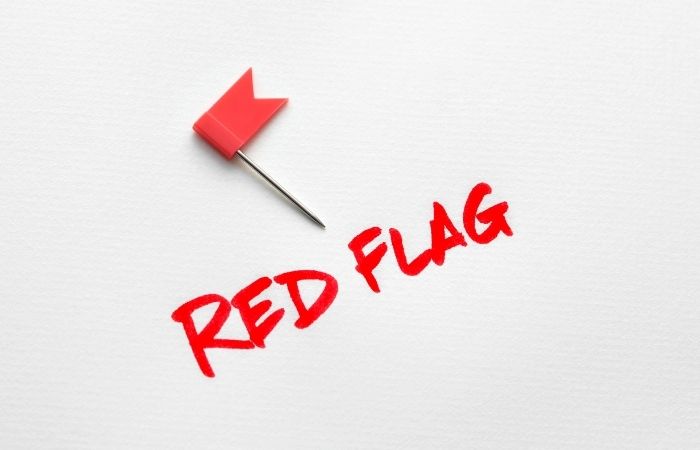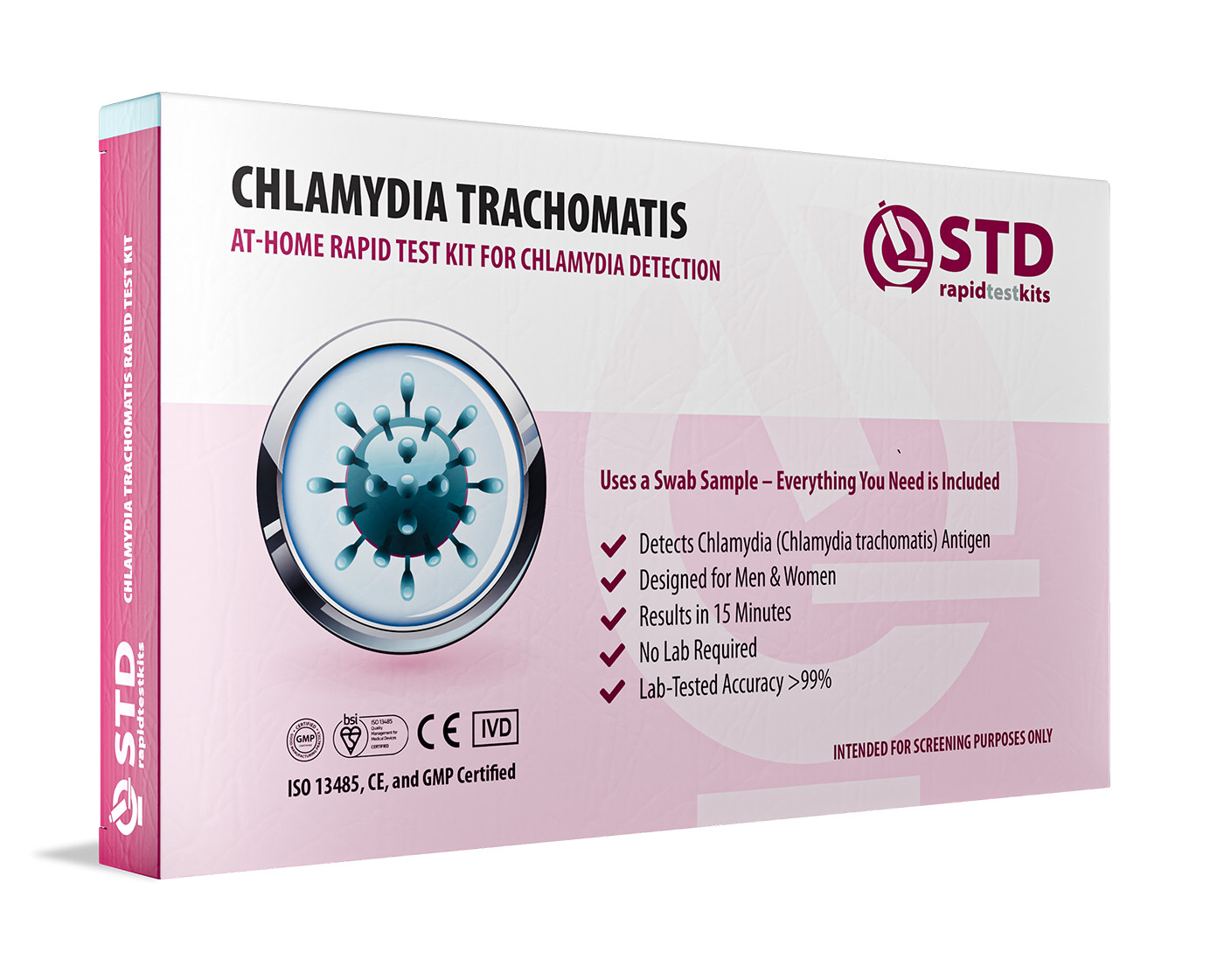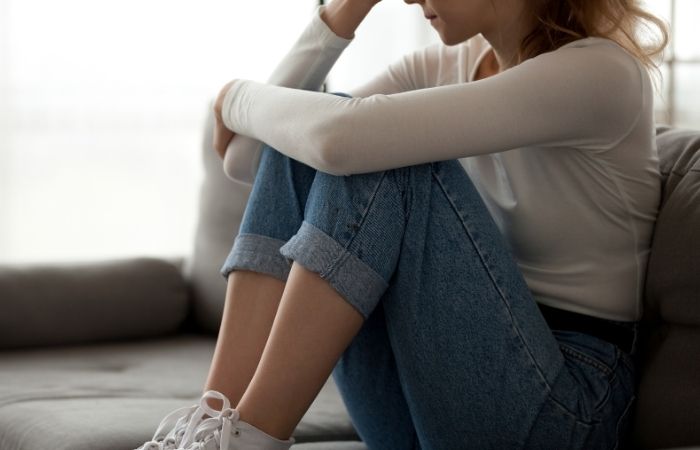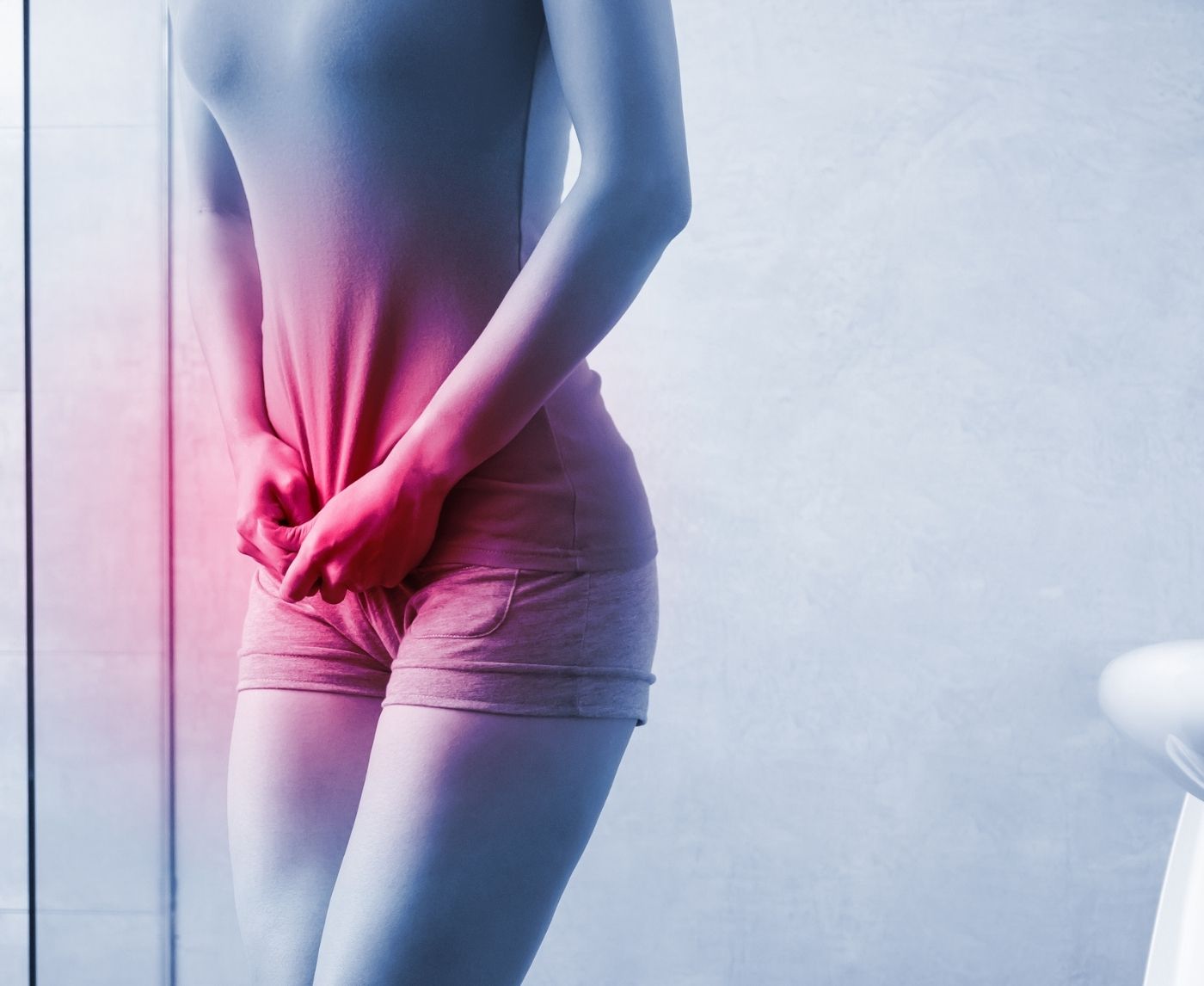Quick Answer: Yeast infections and chlamydia can both cause itching and discharge, but chlamydia is more likely to involve burning during urination, pelvic pain, or no symptoms at all. When in doubt, testing is the only way to know for sure.
Why This Mix-Up Happens All the Time
You're not the first person to mistake one for the other, and you won’t be the last. Many symptoms of common vaginal infections (yeast, bacterial vaginosis, and STDs like chlamydia or trichomoniasis) look and feel incredibly similar. Even providers sometimes misdiagnose or treat based on guesswork, especially in urgent care settings or without lab results.
Part of the confusion comes from how yeast infections are culturally framed: they're treated like a “normal” female issue. They're over-the-counter treatable. They're framed in TV commercials with women frolicking in white pants. That familiarity makes it easy to assume a little itch or odd discharge is “just yeast.” But chlamydia can be silent, or worse, mimic those exact same sensations.
In a CDC report, up to 70% of women with chlamydia had no symptoms at all. When symptoms do show up, they’re often subtle: mild irritation, vague pelvic discomfort, or slightly unusual discharge, nothing screaming “STD.”
This Isn’t Just Discharge: A Symptom-by-Symptom Breakdown
Let's get granular. Here’s a comparison of the most common symptoms, when they appear, and what they usually mean. While no single symptom can diagnose you, patterns matter, and knowing the right ones can save you time, stress, and future complications.
| Symptom | Yeast Infection | Chlamydia |
|---|---|---|
| Discharge | Thick, white, clumpy (like cottage cheese), usually odorless | May be thin, yellowish, or mucousy; sometimes with odor |
| Itching | Intense external vaginal itch, burning, swelling | Mild internal irritation or none at all |
| Odor | None or mild "bready" smell | May have a stronger or unpleasant odor |
| Burning while peeing | Occasionally, if vulva is irritated | Common symptom of urethral infection |
| Pelvic pain | Rare | More likely if infection is untreated |
| Onset timing | Often after antibiotics, sex, or hormone changes | Often 1–3 weeks after sexual exposure |
| Response to OTC meds | Usually improves within 1–3 days | No improvement, or gets worse |
Table 1: Common overlapping and distinguishing symptoms of yeast infections vs chlamydia
“I Took Monistat. It Didn’t Work.” What Now?
If you’ve already treated yourself for a yeast infection, whether with an OTC cream like Monistat, or a prescription pill like fluconazole, and you're still feeling off after 3 to 5 days, that’s a red flag. It doesn't always mean you have an STD, but it definitely means it’s time to pause and reassess.
Maria, 24, shared her experience: “I had this super mild itch and some discharge. I’ve had yeast before, so I didn’t even think twice. Took Monistat. Three days later, I still felt sore when I peed, and the discharge was thinner. Turns out it was chlamydia the whole time.”
This is a common path. People self-treat yeast symptoms without testing. And because chlamydia doesn’t always come on strong, it sneaks by. That delay can lead to complications like pelvic inflammatory disease or pass the infection unknowingly to a partner.
When symptoms don’t respond to antifungals, the next step isn’t “tough it out.” It’s test, rule out STDs, and choose the right treatment.

People are also reading: Ignoring STIs Can Ruin Your Life: The Long-Term Effects You Didn’t Expect
When Yeast and Chlamydia Happen Together
Here's the real twist: it’s entirely possible to have both. Some people develop a yeast infection after treating chlamydia with antibiotics. Others catch both during the same sexual exposure, especially if the vaginal microbiome was already out of balance.
In these situations, symptoms blend. You may get clumpy discharge (yeast) and burning pee (chlamydia), or itching mixed with pelvic cramping. That makes self-diagnosis even harder, and more risky.
This is why many providers will test for multiple infections at once. And why combo at-home test kits are becoming more common and more accurate.
If you’ve had new sexual contact and symptoms aren’t clearing with yeast treatment, co-infection is a real possibility. The best move? Test for both, treat what's actually there, and give your body a clean slate.
You can order a discreet Combo STD Home Test Kit here, it screens for multiple common infections at once and gives you clarity without the clinic visit.
Check Your STD Status in Minutes
Test at Home with RemediumChlamydia Test Kit

 For Men & Women
For Men & Women Results in Minutes
Results in Minutes No Lab Needed
No Lab Needed Private & Discreet
Private & DiscreetOrder Now $33.99 $49.00
How Soon After Sex Can You Test for Chlamydia or Yeast?
Timing matters. Testing too early can lead to false negatives, while waiting too long can mean delayed treatment or unknowingly passing an infection to others. Here's what you need to know about window periods for both chlamydia and yeast infections.
| Infection | Earliest Reliable Testing | Peak Accuracy Timing | How to Test |
|---|---|---|---|
| Chlamydia | 7 days post-exposure | 14+ days post-exposure | NAAT swab or urine (clinic or at-home) |
| Yeast Infection | Symptoms usually appear within 1–3 days | Test as soon as symptoms occur | Microscopy or culture (clinic); newer at-home vaginal health panels also available |
Table 2: Recommended testing windows for chlamydia and yeast infections
Yeast infections can usually be diagnosed based on symptoms, but a lab swab offers more certainty, especially if you’re prone to recurrence. Chlamydia requires a lab test or rapid NAAT to confirm, even if symptoms are mild or absent.
And remember: you can test too early for STDs. If you had sex yesterday and feel itchy today, that might be yeast, but it could also be your body reacting before an STD shows up on a test. Always check the calendar. If in doubt, retest after 14 days for chlamydia to be safe.
What If You Don’t Have Any Symptoms?
This is where chlamydia gets tricky, and dangerous. It’s one of the most commonly missed STDs because it’s often completely silent. Especially in women, it can live in the cervix without causing burning, itching, or discharge at all.
That’s why the CDC recommends routine testing for sexually active women under 25, and for anyone with new or multiple partners. If you’re having sex without condoms, even in a monogamous relationship, it’s worth testing yearly, even without symptoms.
Jordan, 28, shared this: “I went in for a yeast infection but the nurse offered to screen me for STDs too. I almost said no, I had no symptoms, but I’m so glad I did. I tested positive for chlamydia. I never would’ve known.”
The moral? Just because you feel fine doesn’t mean nothing’s going on. Testing isn’t about panic. It’s about protecting your body, and your future fertility.
Take Back Control With a Test That Doesn’t Judge
If you’re still wondering whether it’s yeast, chlamydia, or both, you don’t have to stay stuck in anxiety. The fastest way out is clarity. And now, getting answers doesn’t mean an awkward clinic visit or waiting in line at Planned Parenthood.
At-home STD test kits are FDA-cleared, lab-grade accurate, and fully discreet. You collect your own sample (urine or vaginal swab), send it in, and get results securely online in a few days. Some rapid kits even give results in under 30 minutes.
STD Rapid Test Kits offers combo kits, single-infection kits, and total privacy, including unmarked packaging and encrypted results.
If your head keeps spinning, peace of mind is just one test away. Try the Combo STD Home Test Kit, it checks for the most common infections in one go.

People are also reading: The Future of STD Testing: How At-Home Kits Are Changing the Game
When and Why You Should Retest
If you've tested positive for chlamydia, or if you're still experiencing symptoms after yeast treatment, retesting isn't overkill, it's smart self-care. Here’s how timing works:
After chlamydia treatment (usually a single dose of azithromycin or a 7-day doxycycline course), the CDC recommends retesting about 3 months later, even if your symptoms resolved. This helps catch reinfections, which are common if your partner wasn’t treated at the same time.
For yeast infections, recurring symptoms might mean incomplete treatment, resistance to certain antifungals, or a misdiagnosis altogether. If you’ve used OTC meds more than twice in two months without relief, it’s time for a provider visit or a broader panel test.
Kayla, 32, described her experience: “I kept treating for yeast, but it never really went away. After my fourth round of Monistat, I finally got a real test. Turned out I had both chlamydia and BV. I felt betrayed by my own body, and by all the guesswork.”
You deserve better than guesswork. You deserve answers.
Check Your STD Status in Minutes
Test at Home with Remedium7-in-1 STD Test Kit

 For Men & Women
For Men & Women Results in Minutes
Results in Minutes No Lab Needed
No Lab Needed Private & Discreet
Private & DiscreetOrder Now $129.00 $343.00
For all 7 tests
What to Say to a Partner (And Why It Matters)
Talking to a partner about STD testing or even a suspected yeast infection can feel awkward, but silence is riskier. If you've tested positive for chlamydia, untreated partners can reinfect you, stay silently infected, or develop complications themselves.
It’s not about blame. It’s about breaking the cycle. Try something like:
“Hey, I found out I might have an infection. I’m getting tested just to be safe, maybe you should too. No judgment, I just want us both to be healthy.”
Most people are grateful to be told. And if they’re not? That tells you more than enough.
Bonus: some at-home test services offer partner notification support or allow you to send a kit directly to someone anonymously. Empowering yourself can protect others too.
Privacy, Shipping, and Support, What to Expect
Worried someone might see your test kit in the mailbox? Don’t be. Companies like STD Rapid Test Kits ship in plain, unbranded packaging. The return label won’t mention STDs, and results are delivered online via a secure portal.
Shipping is fast, usually within 1 to 2 business days. Many customers plan testing around weekends or travel to maintain privacy. And if you live in a rural or conservative area, at-home kits give you options clinics can’t.
Need support? Their site offers live chat and email help, plus guides on how to use the kits step-by-step. You’re not alone in this, even if you never see a doctor face to face.
Confidentiality isn’t a luxury. It’s a right. And now, it’s built into your testing experience from start to finish.
What If It’s Positive?
Let’s say you test positive for chlamydia. First, take a deep breath. This doesn’t define you, and it doesn’t mean you’re reckless, dirty, or broken. It just means you’re human, and you had sex. Welcome to the club.
Most cases of chlamydia are cured with a short course of antibiotics. If left untreated, yes, it can lead to serious issues like pelvic inflammatory disease or infertility. But treated early, it’s a simple fix, and your body will thank you for catching it now.
You may also test negative for STDs but still have yeast or BV. In that case, talk to a provider about more targeted treatment, especially if you’ve already tried OTC meds with no luck.
The most important thing is not to disappear into silence. Testing positive is the beginning of healing, not the end of your story.
Don’t wait and wonder, get the clarity you deserve. This at-home combo test kit checks for the most common STDs discreetly and quickly.
FAQs
1. Can chlamydia really feel like a yeast infection?
Totally. The two can overlap more than anyone likes to admit. Chlamydia doesn’t always hit like a freight train, it can creep in with subtle discharge, slight irritation, or nothing at all. If you’ve got a “yeast-like” itch that isn’t clearing, especially after treatment, don’t brush it off. A quick test can save you weeks of confusion.
2. What kind of discharge should I expect with yeast vs chlamydia?
Yeast usually brings thick, white, clumpy discharge, think cottage cheese without the smell. Chlamydia, on the other hand, leans watery or mucousy, sometimes yellow or greenish, and may have an odor. But here's the trick: not everyone has discharge at all. The absence of symptoms doesn’t mean you’re in the clear.
3. Can I get both infections at the same time?
Absolutely. In fact, it’s more common than you’d think. You might treat one (say, yeast) and still have symptoms because the chlamydia’s hanging out in the background. Some people even develop yeast after antibiotics for chlamydia. Bodies are weird. Tests help untangle it.
4. Will Monistat cure chlamydia?
Nope, and this is where a lot of folks get tripped up. Monistat only tackles fungal infections like yeast. Chlamydia is bacterial and needs a prescription antibiotic. If you’re throwing every antifungal at it and nothing’s changing, it’s time to test for the real culprit.
5. I’ve had yeast before. This time feels different. Should I be worried?
Trust your gut. If something feels “off”, burning instead of itching, discharge that’s thinner or smells odd, or pelvic heaviness, it might not be yeast at all. And if you’re sexually active, a quick STD check is never a bad move. Best case: peace of mind. Worst case: you catch something early and handle it fast.
6. Can I test for chlamydia right after sex?
Technically, yes, but early results might not be accurate. Chlamydia takes 7 to 14 days to show up clearly on most tests. If you test right away and it's negative, don’t exhale just yet. Retest after two weeks for confidence that counts.
7. Do guys get yeast infections too?
They can, but it’s less common. For guys, yeast often shows up as redness, itching, or a rash on the penis, usually after unprotected sex or antibiotics. Chlamydia in men, though, can cause discharge, testicular pain, or nothing at all. If you’re a guy feeling off down there, it’s not “just irritation.” Get checked.
8. What if I keep getting yeast infections after sex?
Recurring yeast infections after sex could mean a few things: hormonal shifts, lube or condom sensitivity, or yep, an untreated STD stirring up trouble. If it keeps coming back, don’t keep guessing. Ask your body the right questions with a test that gives real answers.
9. Can BV or yeast mess up my STD test results?
Nah. While BV and yeast can share symptoms with STDs, the tests are specific. A positive chlamydia result means chlamydia is there, it’s not a fluke from yeast or BV. That said, having one infection can make your body more vulnerable to others, so don’t skip the full panel if things feel messy.
10. I really have to tell my partner?
Here’s the thing: if you test positive for chlamydia, telling your partner isn’t just the right thing, it protects you both. You don’t need to launch into a dramatic confession. Keep it short and clear. If they care about you (or themselves), they’ll want to know. And if they freak out? That’s not your shame to carry.
You Deserve Answers, Not Assumptions
If you've read this far, it means you're trying to figure out what’s going on with your body, and that already makes you brave. Whether it’s itching that won’t go away, discharge that doesn’t feel “normal,” or a gut feeling that something’s off, you don’t have to guess anymore.
Yeast infections and STDs like chlamydia can look alike. That’s not your fault. What matters now is clarity, and you have the tools to get it.
Don’t leave your health in limbo. Order a discreet combo test kit today and get the answers you deserve, in private, on your terms.
How We Sourced This Article: We combined current guidance from leading medical organizations with peer-reviewed research and lived-experience reporting to make this guide practical, compassionate, and accurate.
Sources
About the Author
Dr. F. David, MD is a board-certified infectious disease specialist focused on STI prevention, diagnosis, and treatment. He blends clinical precision with a no-nonsense, sex-positive approach and is committed to expanding access for readers in both urban and off-grid settings.
Reviewed by: A. Patel, MPH | Last medically reviewed: September 2025
This article is for informational purposes and does not replace medical advice.










